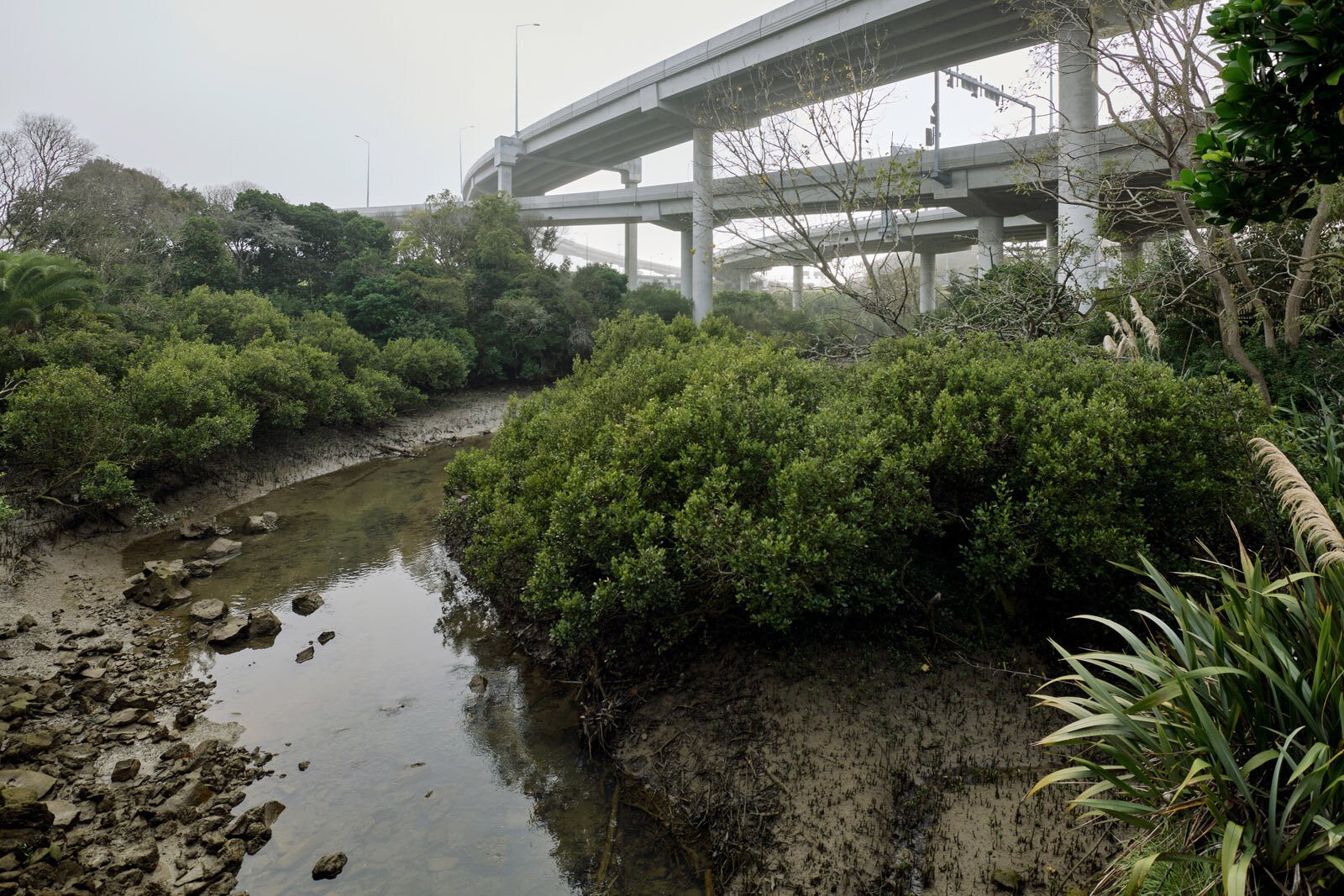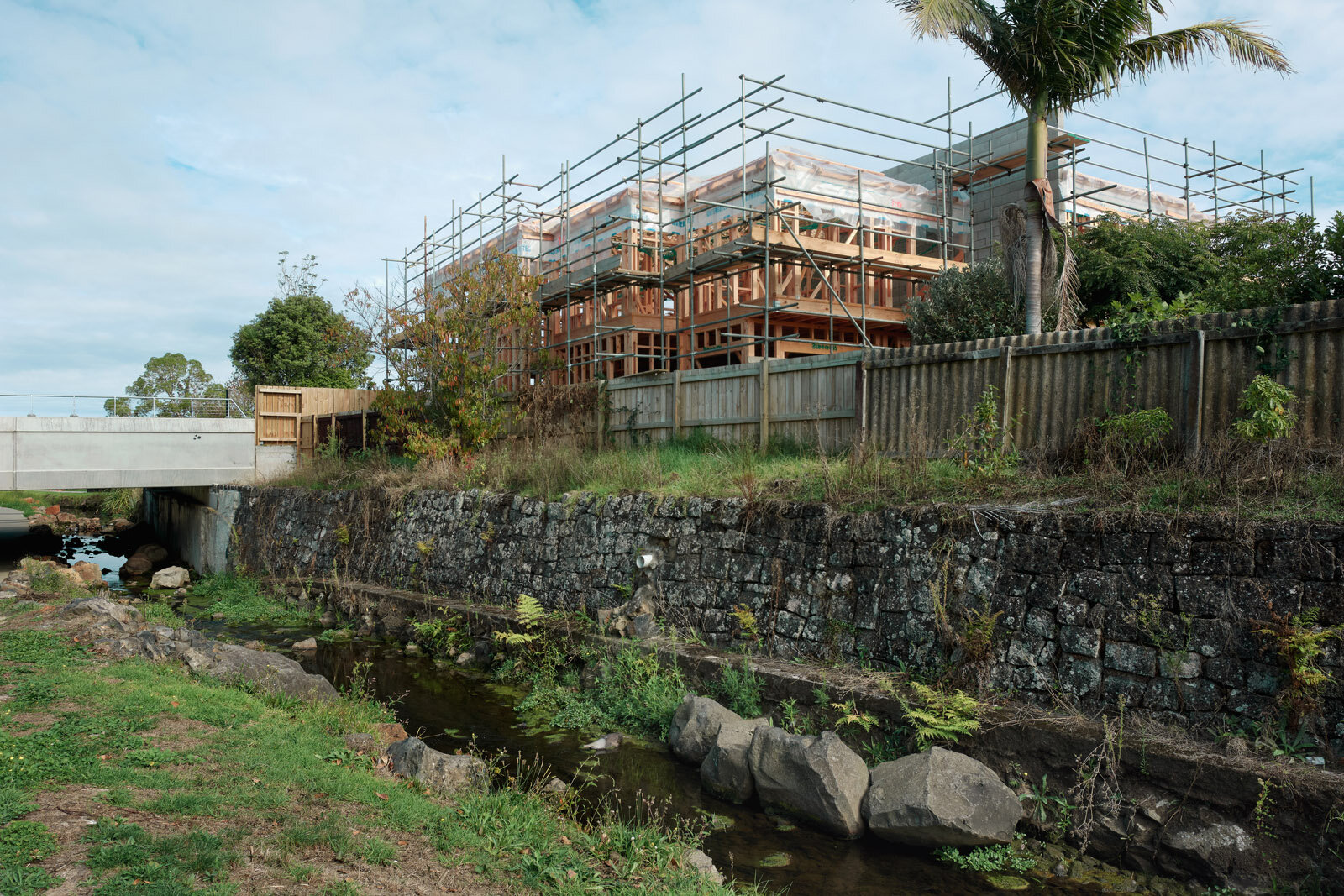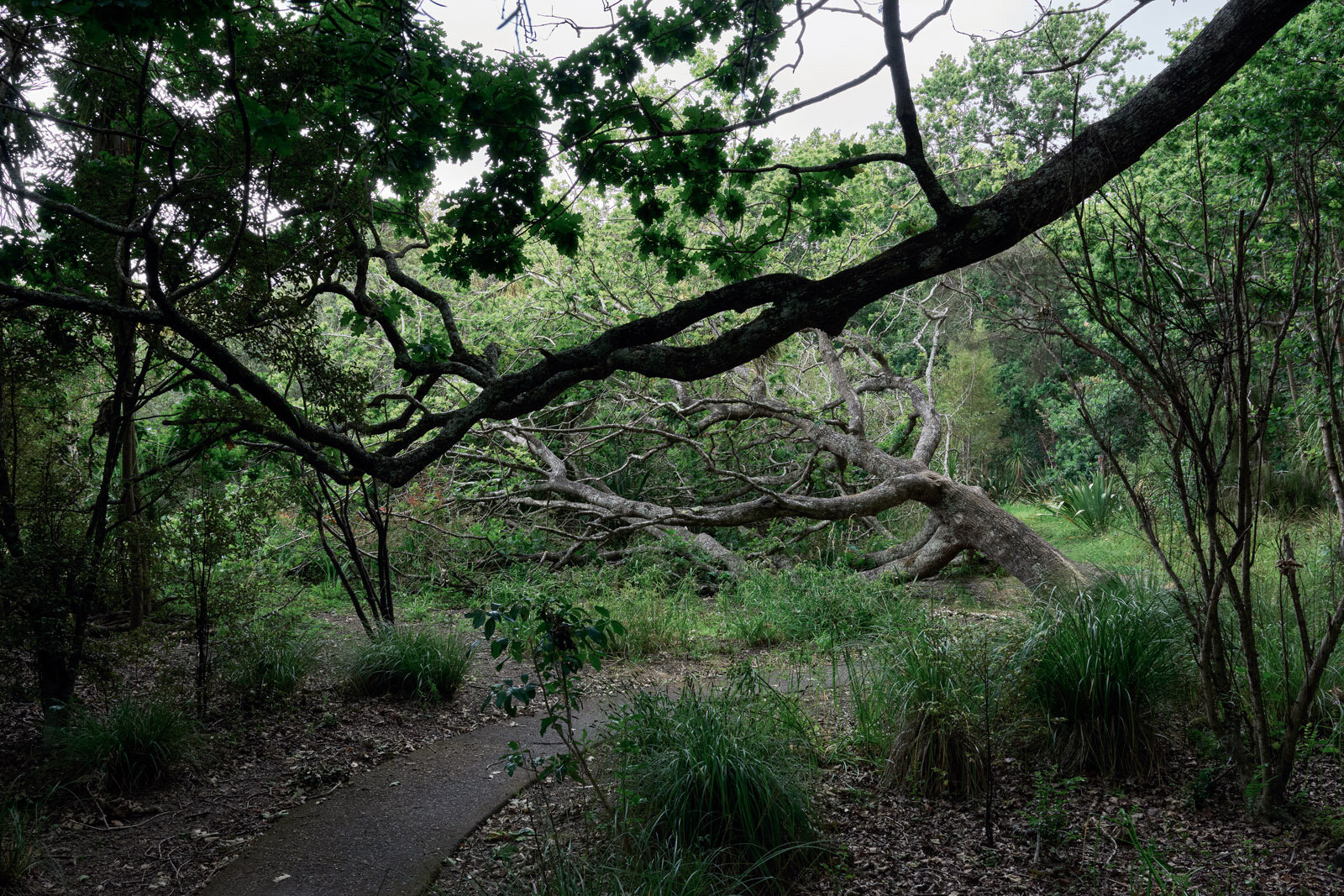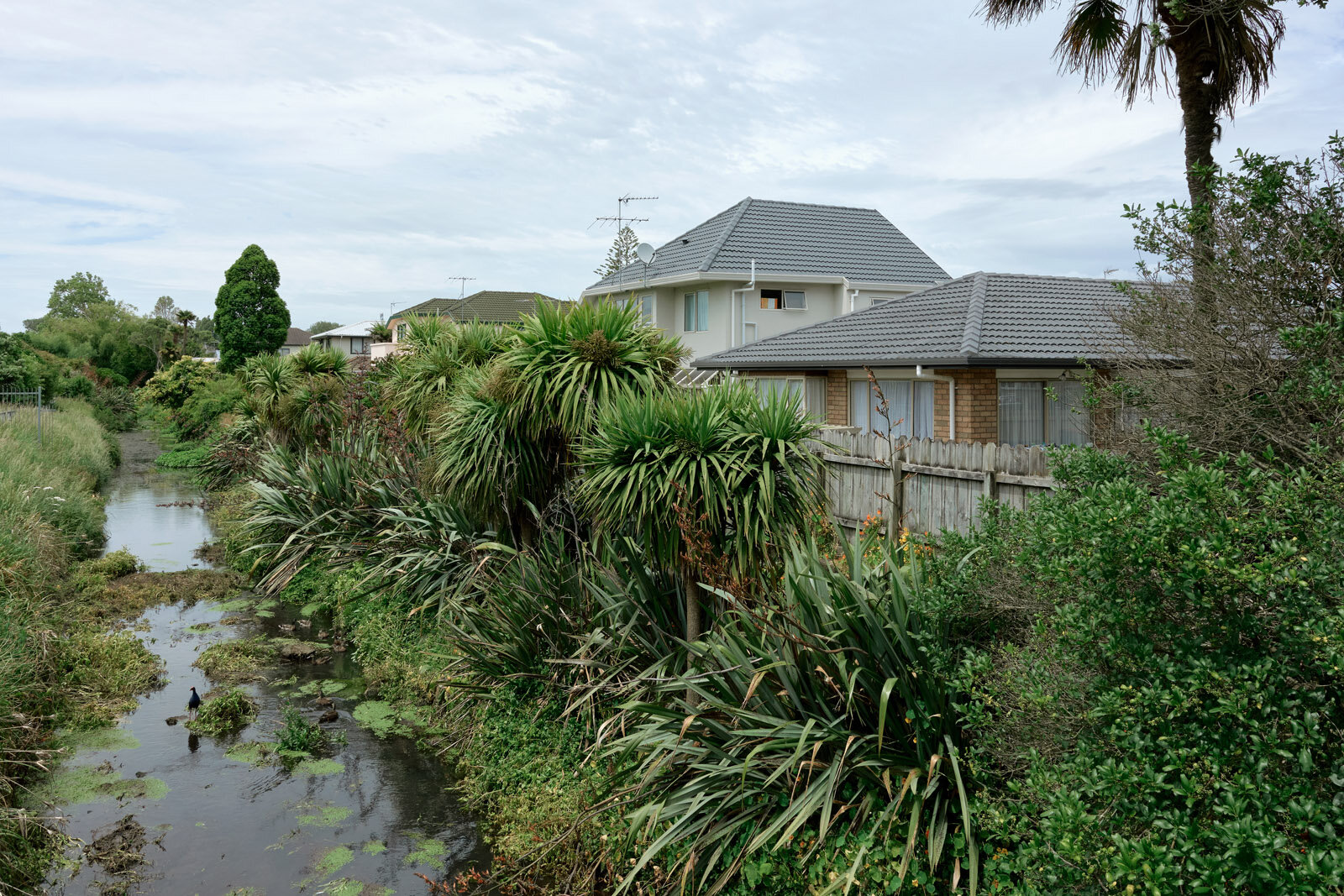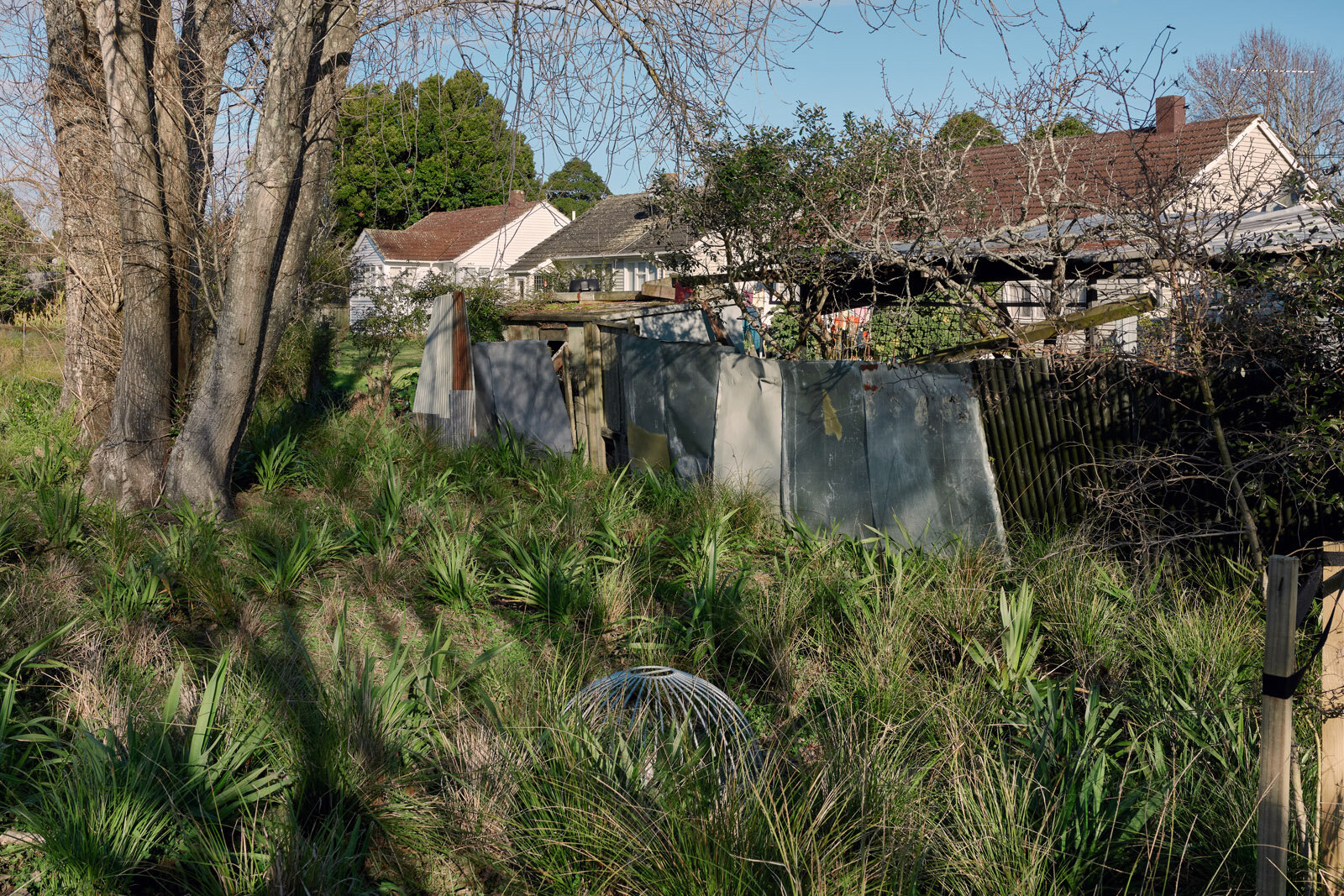Tony Nyberg - Featured Portfolio
Oakley Creek
PhotoForum Featured Portfolio by Tony Nyberg, February 2021
Essay by Professor Robin Kearns
Tony Nyberg, Oakley Creek #01, 10 May 2018
Walking upstream with Oakley Creek
I often exit the shared cycling and walking path that runs along Great North Road and walk onto the trail that skirts Te Auaunga/Oakley Creek. Doing so is to step through a portal into a corridor of imperfect beauty. The path is broken but the land is being healed. Here, for almost two decades, volunteers have weeded, planted and cared for this place. Gradually its mana is being restored. I too have planted and plucked rubbish from the riverbank. But more commonly I have just walked.
The waters of Oakley Creek have become part of my place. I know each bend and I am not alone. A friend tells me he cannot stay away: the Creek has become his Walden Pond. In its presence, the stream speaks to those who listen.
We are drawn to water if we allow it to beckon us. It is as if we are attracted by a centripetal force. The stream forges a curvature to serve its gushing artery. There is a pulsing energy from the heart of the isthmus, contesting attempts to contain its course. Straight lines, by contrast, are the city’s motif: lines mark the middle of roads, edges of buildings, the geometries of boundaries. But streams have their own reasoning, carving a course of least resistance; passing mossy rocks and through gaps between them. The flow knows its own compass, seeking out the sea.
Kennedy Warne has described the Creek as one of the “unkempt edges of the familiar”. Here, neglect and nurture co-exist; rotting stumps of pines, perforated by burrowing insects, and newly planted natives stand side by side.
It’s a place of the unexpected. Kawakawa, karaka, kahikatea: is there a shade of green absent in the palette of this ravine? Suddenly there can be a pair of ducks, struggling upstream over tiny rapids to rest within a pool of their own; next moment the deep-throated rasp of a heron high in a pine tree is a sentinel to the setting sun.
Between the ominous brick of the former asylum on one side and the newly widened Great North Road on the other, the tree-filled ravine dulls the city’s sounds. There are remnants of gentler times: rock walls crafted from basalt lava flows and rusted artefacts of early industry. Parts of a boiler lie on the riverside suggesting the Japanese idea of wabi sabi, that poignancy of passing of time and inevitability of decay.
Some days, the Creek smells stale with a hint of detergent. Yet on summer days, the young and the brave jump from the waterfall, oblivious to pollution warnings. Will purity of the water one day be restored? We need clean waterways for more than just the integrity of the life they support. As Thomas Berry writes, the more tainted our planet’s waterways become the less we appreciate water’s significance. Tainted streams, he says, diminish our understanding of clarity and water’s ritual uses become degraded in the collective consciousness.
Above the waterfall, the path ascends from the valley and embraces the city again – winding past sports fields, the cycleway and train tracks. Then a choice: descend to greet the stream again or branch off back into the busy world. Michel de Certeau writes of two types of walking: the strategic and the tactical. Roads and cycleways offer strategies: they prompt people to keep left and keep moving. They are logically constructed to efficiently ensure we get from points A to B. Tactics are more nuanced: ways of walking involving shortcuts, pauses, and memories. The Creek encourages tactics. It suggests stepping off the path to observe the water’s flow, a pool’s reflection or some small life form. Through the tactic of lingering, we expose ourselves to the watery influences on wellbeing.
Beyond the bush, tendrils of the waterway reach up into higher ground along culverts and through tunnels. Yet the Creek has the last words: “contain and constrain me at your peril”, it seems to say. Managing routes through channels and kerbs works most days. But venture to the riverbank with caution during a storm. Then the waterway roars and trees are ripped out by their roots. There are no delicate scenes when a stream is in flood. Be warned by the debris caught waist-high in those tree branches. As James K. Baxter wrote ‘The creek has to run muddy before it can run clear’. A rich metaphor for the human journey.
The Creek asks little of us but to walk attentively in its presence. Can we slow down and be moved by its fluid talk?
Robin Kearns, February, 2021
Oakley Creek / Te Auaunga is one of Auckland’s longest urban streams, flowing from Hillsborough through Mt Roskill, Owairaka and Waterview to the Waitematā Harbour. The creek’s rich Māori and European heritage and abundance of native and exotic flora and fauna makes it an important natural asset.
With colonial settlement, much of the ancient wetlands in Puketāpapa / Mt Roskill were drained for farming and lengths of the stream were channelled in the late 1930s; however, the lower reaches of the creek have remained relatively natural and unmodified.
In the Wesley / Mt Roskill area, concrete channels of the stream have been replaced with a wider naturalised stream channel to prevent ongoing flooding issues. This project has created a lasting legacy in the area by restoring native ecologies, landscaping, planting and improving water quality, adding walking trails and cycle paths, building an outdoor classroom, playground and Māori play elements.
Until recently, Robin Kearns lived in close proximity to Oakley Creek. Since childhood, he has had a fascination with waterways and ecosystems as well as poetry and the written word more generally. Robin is Professor of Geography in the School of Environment at the University of Auckland. A social and cultural geographer, his research embraces a wide range of issues that relate to the broad theme of the role of place in human wellbeing. His most recent collaborative book is Blue Space, Health and Wellbeing: Hydrophilia Unbounded (Routledge, 2019).
Tony Nyberg is a photographer, videographer and co-founder of back_space_books, based in Tāmaki Makaurau / Auckland.
Oakley Creek / Te Auaunga is within walking distance of his home in Pt Chevalier. This provided access and opportunity to continuously photograph the environmental and cultural changes of the creek and its surrounds throughout the seasons, over a two-year period.
Growing up in Ōtautahi / Christchurch, summer holidays were spent at the many rivers in the region. Being a local urban waterway, Oakley Creek was a place for exploration that was reminiscent of these early childhood years. It was also a welcome retreat from the busyness of city life.
Published with the support of Creative New Zealand

